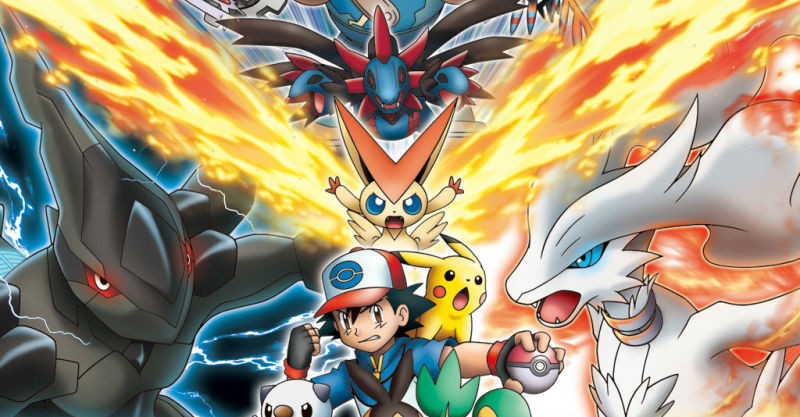Books: The Anime Boom
March 30, 2018 · 0 comments
By Jonathan Clements.
In The Anime Boom in the United States, Michal Daliot-Bul and Nissim Otmazgin summarise several key issues in modern anime, including an overview of its entrepreneurs, the long-term influence of Japanese governmental cultural policies, and the effects of anime stylistics on contemporary American cartoons. They promise a “top-down” perspective on the business of selling Japanese animation, although I dispute whether they, or anyone else, is really sure where the top is. It certainly isn’t among the policy wonks of JETRO and MEXT, who are accused here of inflating their own statistics and bureaucratising the arts with pointless form-filling. Ridiculed by several interviewees for meaningless managerial exhortations to be “cool”, their attempts to get down with the kids are presented as embarrassing gaffes like your dad trying to breakdance. But Daliot-Bul and Otmazgin let those self-same bureaucrats plead their own case, leading to some wonderfully quotable comments and some enjoyably hand-waving dismissals of artistic integrity and poverty-line wages.
You might think that Pokémon took the world by storm. Mami Toyonaga from JETRO has a gloriously tight-fisted take on its success, claiming that not enough of its profits made it back to the Japanese because they were too “naïve and trusting”. This is echoed by Dentsu’s Shintaro Kogake, who similarly paints the Japanese as starry-eyed innocents, confused by all the big words in a foreign contract, and inadvertently bundling merchandising in with broadcast rights. The majority of the authors’ interviewees, in fact, from both Japan and America, still cite language as the primary stumbling block to success, which eventually leads the authors to conclusions not unlike those of Tadashi Sudo in last year’s Who Will Make Anime Now? I’m tempted to suggest that they could have saved a lot of time by publishing a single-page joke version of their book, which simply opened to reveal the words SPEAK JAPANESE, but that would be unfair, because it is plainly a source of some regret among their Japanese interviewees that they, too, do not speak English. Nestled in their closing chapters are some real landmines of truth, including a prolonged appreciation of how and why the Koreans seem to have managed cultural exports so much better.
 Daliot-Bul and Otmazgin want to think pragmatically about the anime business in America. They refer to the markets of both Japan and America as “embedded in a coercive set of organisational conditions” that force them into certain set modes of investment, risk and output. This is true, although this book only grazes the edges of the historical, technological and structural factors that have created such an environment. There were powerful, technological-determinist forces at work in creating the American anime boom, and the whole point of a historical approach would surely be to investigate this and track down its agents.
Daliot-Bul and Otmazgin want to think pragmatically about the anime business in America. They refer to the markets of both Japan and America as “embedded in a coercive set of organisational conditions” that force them into certain set modes of investment, risk and output. This is true, although this book only grazes the edges of the historical, technological and structural factors that have created such an environment. There were powerful, technological-determinist forces at work in creating the American anime boom, and the whole point of a historical approach would surely be to investigate this and track down its agents.
Who actually are the movers and shakers of American anime? If you asked me to list the folks who would be sure to have an insider’s view of the early 21st century US industry, I’d probably start with the three Johns – O’Donnell, Ledford and Sirabella – who managed Central Park Media, ADV Films and Media Blasters, but they are conspicuous by their absence. The text tips its hat to Crunchyroll’s Kun Gao and Funimation’s Gen Fukunaga, but neither of them appear to have been interviewed directly, and there’s not a whisper from Manga Entertainment’s Marvin Gleicher or Ken Iyadomi. Instead, the authors have found a set of interviewees in part because they are not the usual suspects. Some, like Sam Register from Warner Bros, are notable because they represent powerful, blue-chip players unseen on the convention circuit. Others operate at a pay-grade way above the kind of people usually quoted on such matters. Dentsu’s Anthony Kang, for example, is impressively frank about some of the organisational issues within his company that have risked harming its investments.
Anime pundits, myself included, often inject some harsh reality by comparing the sales figures for Japanese cartoons to those for Pixar movies. But Daliot-Bul and Otmazgin note that Pixar’s success is itself a unique one-in-a-thousand outlier, and that a small fish like Production I.G can still turn over a 10% return on investment, year-in year-out. I’d counter that Production I.G itself is something of an outlier, and that the last ten years have seen a bunch of other anime studios go to the wall, but I take their point. However, the closer one is to power in the anime industry, the more likely one is to be the signatory of a non-disclosure agreement, and hence physically unable to give people the answers they seek.
Many of their interviewees are at the sharp end of business, working for the advertising companies to whom anime is simply the filler that keeps the commercials apart. This is a vital and often-overlooked area, because writers who come from fandom tend to forget that, for many participants, the nature of the product is no different from soap powder or widgets, which can lead to a perspective interestingly shorn of any artistic considerations. This leads me to one of my favourite quotes in the book, sure to be considered a slap in the face by proponents of Fan Studies, and on which I am sure many anime producers would refuse to comment. Marco Pellitteri, however, has no such fears, and lets the fans and the producers have it with both barrels:
“Fans are a noisy minority that led many observers in the industry (and in academia!) to think that they are more numerous, representative and important than they actually are…. today, the targeting of narrow audiences is a self-fulfilling prophecy in terms of total economic failure: you make a series for a very tiny specific audience, then you want to sell it [overseas] for a higher price, because you want to make abroad the money that you failed to make in your own country.”
Depending on how we want to define the “top” of top-down, there are plenty of business books in Japanese that have already got to grips with it. Seiji Horibuchi from Viz Communications and Mitsuhisa Ishikawa from Production I.G, for example, have both published accounts of their work, and Hiromichi Masuda has committed trilogy with Understanding the Anime Business, Understanding the Anime Business More, and The Digitally Transforming Anime Business, revisiting his vision of the industry at five-year intervals throughout the period under study. But none of these works are referenced here, and the authors also appear to have given the landmark collection Anime Gaku only a cursory glance, quoting from Ryosuke Takahashi’s essay in it, but not a dozen others pertinent to their thesis.
One chapter in Anime Gaku that they would have done well to read is Masataka Murasawa’s piece on the diversification of anime studies, which alludes to the disconnection between academia and the industry, neither of which usually has any real interest in communicating with the other. This is not the fault of Daliot-Bul and Otmazgin, who I am sure were pushed into making starry-eyed promotional promises about the magic properties of their book, whereas their true aims are really far more modest. In presenting a spread of commentary from some lucid and unusual figures within the anime industry, they have created an interesting resource. The Anime Boom in the United States is a useful and instructive book, but I doubt that it can fulfil its subtitle’s promise to contain “lessons for global creative industries”, unless those lessons extend to the rather obvious requirement to know your market and speak its language.
Jonathan Clements is the author of Anime: A History.

Leave a Reply